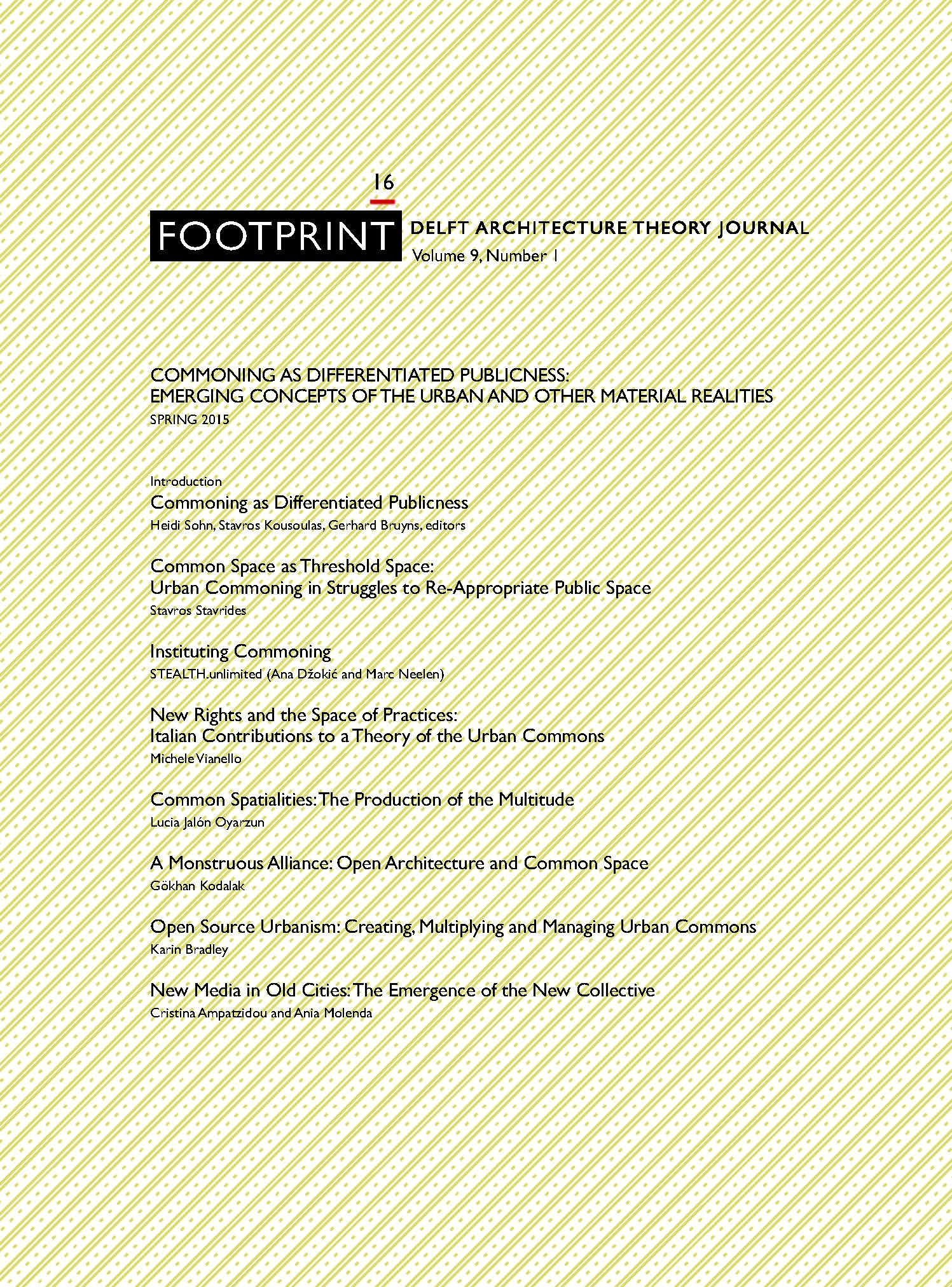A Monstrous Alliance: Open Architecture and Common Space
DOI:
https://doi.org/10.7480/footprint.9.1.900Abstract
The contemporary built environment is absorbed by a dualist spatial organisation model divided between public and private space. Within this restrictive grammar, public space, despite its democratic promise, is heavily indoctrinated and anesthetised under the hegemony of regulatory apparatuses and control mechanisms, whereas private space has catalysed, if not directly engendered, prevalent spatial problems, such as ever-increasing slums, discriminatory gentrification and ecological catastrophes, despite its self-approving assurance. Underneath this dysfunctional couple lies common space, a third category that constitutes the shared spatial commonwealth of our entire natural and cultural milieu.
The multitude, as an emerging body of self-organising political and spatial actors, has already started to unearth the potential of common space, actualising emergent and interactive spatial configurations all around the world. In this new, self-organisational model, architects do not become obsolete; rather, they leave behind their conventional roles as submissive experts and cosmetic speculators. By becoming anomalous architects, they affirm and augment the opening of spatial and architectural milieus to a myriad of new possibilities.
This article theorises the possibility of a monstrous alliance between anomalous architects and the multitude, between open architectures and common space. Two specific case studies accompany these theoretical frameworks: the Gezi Event (Istanbul, 2013) demonstrates the actual emancipation of common space through the self-organising activity of the multitude, while Open-Cube (Antalya, 2013) attests to an early open architecture experiment based on the potentiating activity of the anomalous architect.
Downloads
Published
Issue
Section
License
- Authors retain copyright and grant the journal right of first publication with the work simultaneously licensed under a Creative Commons Attribution License that allows others to share the work with an acknowledgement of the work's authorship and initial publication in this journal.
- Authors are able to enter into separate, additional contractual arrangements for the non-exclusive distribution of the journal's published version of the work (e.g., post it to an institutional repository or publish it in a book), with an acknowledgement of its initial publication in this journal.





